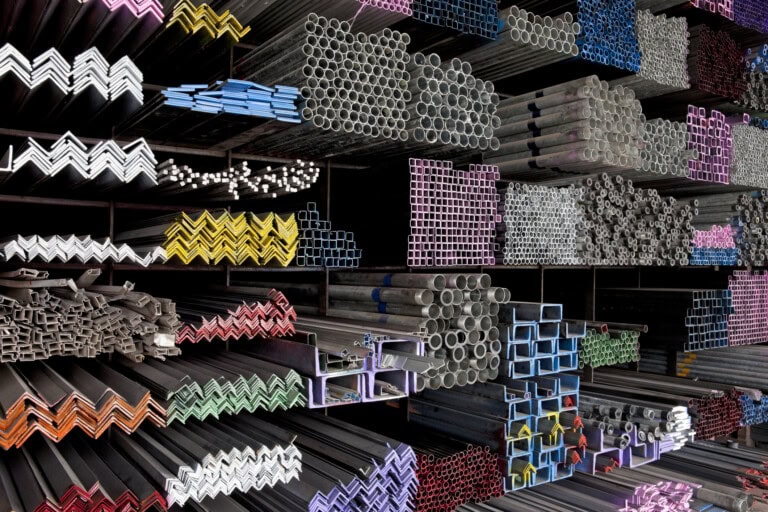EPDs and Materials Passports in Circular Construction

The UK Green Building Council (UKGBC) has launched its latest guidance on materials passports, reinforcing the drive towards circularity in the built environment. With construction and demolition responsible for 60% of the UK’s material use and waste generation, the sector faces a pivotal challenge: transitioning from a linear ‘take-make-dispose’ model to a regenerative, circular economy. Materials passports are emerging as a tool to address this shift, but one of the key components to their success is environmental product declarations (EPDs).
The role of materials passports in circular construction
A materials passport is a digital record that captures essential data about a material’s composition, life-cycle impact, and reuse potential. By documenting these attributes, passports support informed decision-making at every stage of a building’s life-cycle — from design to deconstruction. They ensure materials retain value beyond their initial use, reducing landfill and supporting a truly circular economy.
This aligns with the UK’s increasing focus on material reuse to lower embodied carbon. More developers and project teams now prioritise not just the upfront emissions of materials but also their potential for reclamation and reuse. However, for materials passports to function effectively, the industry needs standardised, reliable environmental and material data. While EPDs provide insights into environmental performance, a broader set of information—covering material composition, deconstructability, and circularity potential—is required to fully support their implementation.

Why EPDs are essential to materials passports
EPDs, as defined by the European standard EN 15804, provide third-party verified data on a product’s environmental impact across its life-cycle. This independent verification ensures reliability, giving architects, engineers, and contractors confidence in their material choices. EPDs specifically measure global warming potential (GWP) — the key metric for assessing a material’s embodied carbon — alongside other environmental indicators. This data is broken down into core life-cycle stages, covering production, construction, use, and end-of-life.
For manufacturers, this shift presents a challenge and an opportunity. As sustainability expectations grow, contractors and clients increasingly require EPDs from their supply chains. Without them, manufacturers risk exclusion from tenders where transparency on environmental impact is now a key selection criterion.

The regulatory and market drivers for EPD adoption
Several regulatory and industry-led initiatives are accelerating EPD and materials passport adoption:
–UK Net-Zero Commitments & PAS 2080: The UK’s net-zero strategy is driving stricter embodied carbon reporting, with PAS 2080 emphasizing life-cycle assessment (LCA) and material transparency.
–EU Level(s) Framework & Ecodesign for Sustainable Products Regulation (ESPR): UK manufacturers selling in the European market must comply with ESPR, reinforcing the need for transparent product environmental data.
–Client and investor demand: With EDG (Environmental, Social, and Governance) criteria shaping investment and procurement decisions, having EPDs can be a competitive advantage.
Mapping low-carbon products with digital tools
To fully utilise EPDs and materials passports, the industry must leverage digital tools that simplify access to environmental data. Platforms aggregating EPDs and materials passports into searchable databases allow architects, engineers, and contractors to compare materials based on carbon footprint, sourcing, and end-of-life potential. These tools also provide manufacturers with a platform to showcase their products, helping specifiers select materials aligned with sustainability targets and regulations.
EPDS and materials passports in building certifications
EPDs and materials passports contribute to key sustainability certifications. EPDs support compliance with embodied carbon reduction targets in BREEAM, LEED, RICS, and Level(s), while materials passports enhance circularity by tracking material provenance and reuse potential. Though not yet mandatory, they are increasingly recognised as essential for meeting sustainability benchmarks and certification requirements.
Streamlining EPD generation for materials passports
For EPDs to drive widespread materials passport adoption, the process of generating them must be efficient and accessible. Historically, EPD production was time-consuming and costly, but advancements in life-cycle assessment (LCA) software are streamlining and semi-automating the process.
Manufacturers can now generate and publish EPDs more efficiently, ensuring their products are market-ready and compliant with evolving regulations. By leveraging such tools, construction professionals can integrate materials passports into workflows more seamlessly, reducing complexity and improving traceability.

Beyond EPDs: enabling circular construction through digital solutions
Beyond EPDs, digital platforms play a key role in promoting low-carbon materials. Global material databases, like Material Compass provided by One Click LCA, help AEC professionals assess materials based on environmental impact while allowing manufacturers to showcase their lower-carbon products. By integrating these tools, the industry can build a structured, accessible pathway from EPD creation to materials passport adoption, embedding sustainability within material selection and procurement.
From data to action: embedding materials passports in practice
To fully realise the potential of materials passports, stakeholders across the built environment must collaborate to standardise data collection, enhance material traceability, and integrate passports into Building Information Modelling (BIM) workflows. This involves:
–Manufacturers prioritising EPD generation to ensure materials are eligible for passports and suitable for reuse.
–Architects and engineers incorporating materials passports into specifications, considering end-of-life material value at the design stage.
–Contractors and developers leveraging material databases to select circular products that align with sustainability goals.
A call to action for a circular future
As circular construction gains momentum, materials passports are emerging as a critical tool in the transition. However, without the foundational data provided by EPDs, their full potential remains unrealised.
For real progress, manufacturers, specifiers, and policymakers must work together to ensure environmental data is not only available but actively used to support material reuse and carbon reduction. By embracing materials passports and the EPDs that enable them, the UK’s construction sector can take a more meaningful step towards a truly sustainable, resource-efficient future.

How EPDs support materials passports
| How EPDs support materials passports | Why should you have an EPD to obtain a materials passport? | Benefit to materials passport |
| Standardised environmental data | Ensures that all environmental impacts are measured consistently across materials. | Facilitates accurate life-cycle impact assessments, which are essential for evaluating reuse and recycling potential. |
| Third-party verification | Confirms that the environmental claims made about materials ate independently verified. | Enhances the reliability and credibility of material information in the materials passport. |
| Embodied carbon measurement (GWP) | Quantifies the greenhouse gas emissions associated with a material’s life-cycle. | Supports informed decision-making in carbon-conscious construction and design projects. |
| Compliance with industry frameworks | EPDs often comply with recognised standards and certifications, such as PAS 2080, LEED, BREEAM, and Level(s). | Ensures the material’s data complies with relevant regulatory and sustainability frameworks. |
| Market competitiveness | Manufacturers with verified EPDs are more likely to be preferred in tenders and procurement processes. | Enhances a material’s market appeal, making it more competitive in sustainable building projects. |
Related
What are Material Passports and what are the benefits of using them?

What are the environmental impacts of construction materials? An introduction to Embodied Ecological Impacts

What does it mean to be 100% circular? Metrics, Benchmarks and Indicators for the Circular Economy

Embracing Circular Economy Design principles and interconnected enablers for Sustainability

